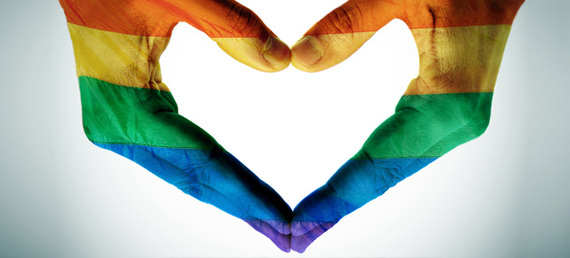Over the past six years my life and beliefs have changed dramatically. Most importantly, I am a former conservative, anti-gay Christian that is now an ally/activist for the LGBT community. But what does it mean to be an ally/activist and what is the reason for the transformation of my beliefs? It all boils down to one simple, yet profound skill that I have had to develop and hone for the better part of a decade. That skill is the practice of intentional empathy.
Practicing intentional empathy is at the core of not only my Christian beliefs, but also my beliefs of what every ally/activist must do in order to effectively assist and advocate for a marginalized group in today's world.
There are three important realizations that I have come to in practicing intentional empathy and becoming a partner to the LGBT community. While this is conclusive list, these three things have aided me in becoming an effective ally.
The first and most important aspect of practicing intentional empathy is to realize your privilege. I am a straight, white, CISgender male and as such that means that conservative society as a whole illogically grants me freedoms and privileges that my LGBT brothers and sisters aren't always given. In recognizing our own privilege, we are reminded of the privileges others are denied, simply for being who they are. And in recognizing those privileges denied, we have a common-sense idea of the ideologies that we should help others fight, so that we might achieve equality.
The second aspect of practicing intentional empathy is the constant need to remind ourselves that as allies we may be a part of the fight, but we are not the focus. Practicing intentional empathy means understanding that it is our responsibility to amplify and serve those to whom the fight belongs. An effective ally comes along side those he advocates for, and does not overshadow or try to outshine them. After my book, The Cross in the Closet, was released in October 2012, I made it a mission to help my friend Brandon Wallace, get his book, Straight-Face, published, so he would have a chance to tell his powerful and life-changing story. Brandon was a closeted gay man, and a Southern Baptist Youth Pastor at the same time. After being outed by a member of the church, he was forced to reconnect the dots between his sexual orientation and his Christian world-view. I highly suggest reading Straight-Face, if you want to be challenged and encouraged.
The last key in practicing intentional empathy is to realize that as a child, before you were encourged to fear those that are different from you, you were always innately practicing intentional empathy. Young children are simply unable to process and make judgments based upon the societal labels that so divide us later in life, and as such, are gifted in empathy towards all people. So in understanding these three keys, we are essentially RE-learning instead of learning how to be empathetic to those possessing different labels of race, economic class, religious affiliation or sexual orientation.
If you are interested in hearing a more in depth account of my personal journey towards re-learning this vital life skill, please watch the video below. It is my recent presentation at TEDx University of the Aegean, and I hope it not only encourages you in your journey, but also challenges you to see the world through your "neighbor's" eyes, because that view makes life so much more beautiful.
